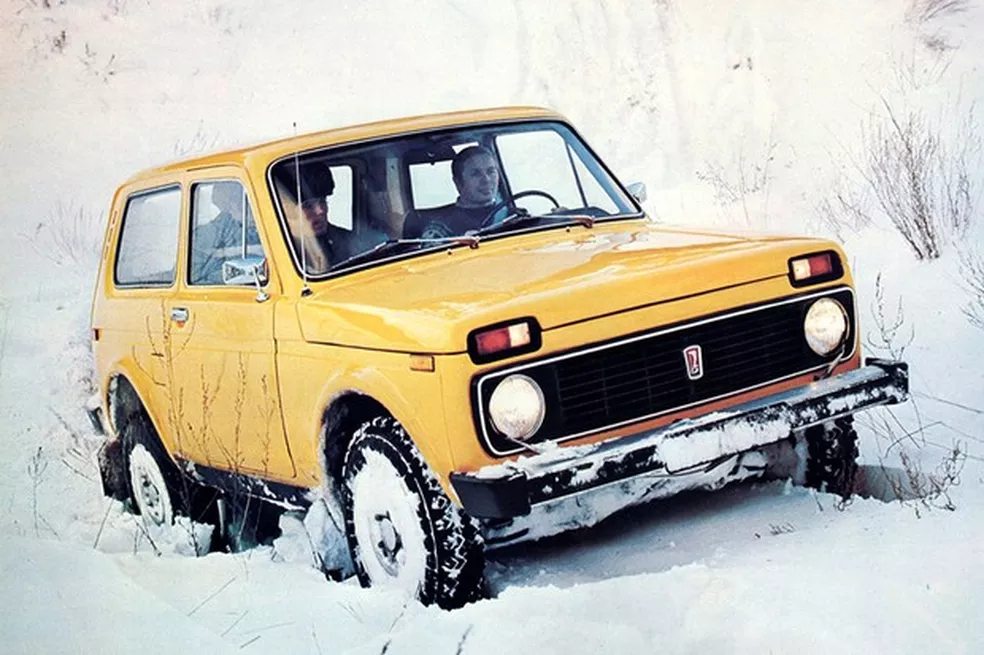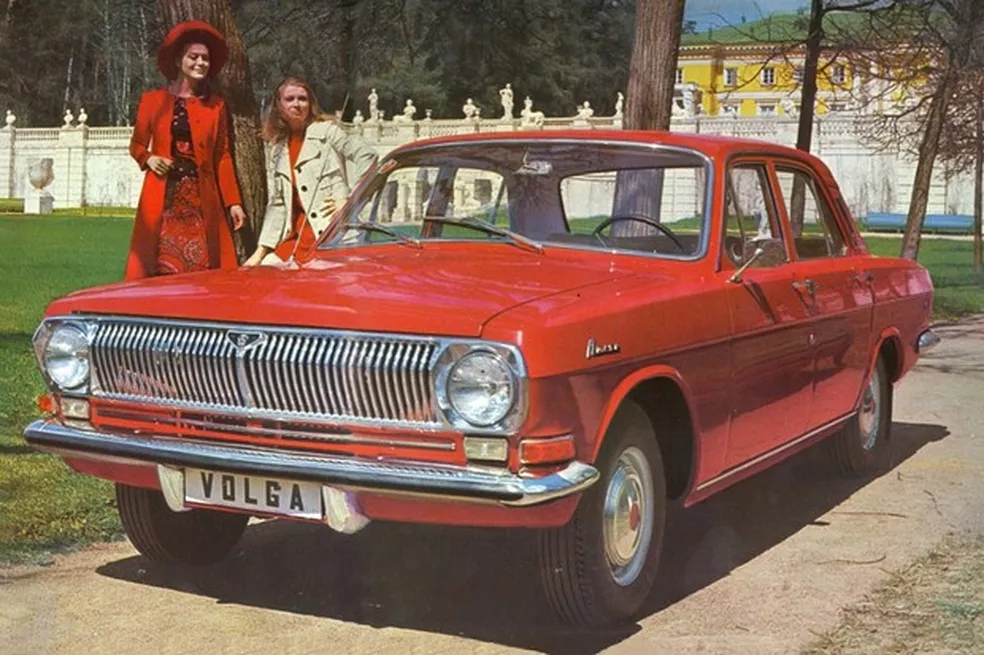Why Soviet Cars Had Built-In Ice Scrapers and Ashtrays

Anúncios
Soviet cars, with their utilitarian designs and quirky features, stand as relics of a bygone era, embodying the practical and cultural realities of the Soviet Union.
These vehicles, often mocked for their clunky aesthetics, were engineered with a distinct philosophy: functionality over flair, durability over luxury.
Among their most intriguing quirks were built-in ice scrapers and ashtrays—features that seem peculiar today but reveal much about the environment, society, and engineering priorities of the time.
Anúncios
Why did these cars, from the boxy Lada to the rugged GAZ, incorporate such specific accessories?
This question invites us to explore the interplay of climate, culture, and ideology that shaped Soviet automotive design, offering a window into a world where practicality was paramount.
The Harsh Reality of Soviet Winters
Living in the Soviet Union meant contending with brutal winters, especially in regions like Siberia or the Ural Mountains, where temperatures could plummet to -40°F.
For drivers, clearing ice from windshields was a daily ritual, not a minor inconvenience.
Unlike modern vehicles with advanced defrosters, Soviet cars relied on basic engineering, making ice scrapers essential.
Manufacturers like AvtoVAZ integrated these tools into the car’s design—often tucked into the trunk lid or glovebox—ensuring drivers were never caught unprepared.
This wasn’t just convenience; it was necessity.
A 1985 Soviet automotive manual emphasized that “every vehicle must be equipped for winter operability,” highlighting the state’s focus on equipping citizens for survival in extreme conditions.
Consider the Lada 2101, a compact sedan based on the Fiat 124 but modified for Soviet realities.
Its ice scraper, often a sturdy plastic blade stored in the trunk, was designed to withstand repeated use on thick frost.
This small detail reflects a broader ethos: Soviet cars were built to endure, not impress.
The inclusion of such tools wasn’t a marketing gimmick but a response to the environment, much like a ship carrying lifeboats for stormy seas.
Without heated garages or widespread access to aftermarket accessories, drivers relied on what the car provided.
The ice scraper, unassuming yet vital, was a nod to this reality.
Furthermore, the integration of such practical features illustrates how Soviet engineering prioritized the needs of everyday life, ensuring that vehicles were equipped to handle the harshest conditions.
Smoking Culture and the Ashtray Standard
If ice scrapers addressed the climate, ashtrays spoke to the culture.
Smoking was ubiquitous in the Soviet Union, with cigarettes like Belomorkanal or Yava as common as bread.
In the 1970s, over 60% of Soviet men smoked, according to a study by the World Health Organization, and public spaces, including vehicles, reflected this norm.
Soviet cars, from the Volga to the Moskvich, featured ashtrays as standard, often integrated into the dashboard or rear armrests.
These weren’t mere conveniences but cultural artifacts, signaling that smoking was an expected part of daily life, even while driving.
Take the GAZ-24 Volga, a symbol of Soviet prestige often used by officials.
Its ashtray, a robust metal compartment, was designed for heavy use, complete with a spring-loaded lid to contain ash.
This wasn’t about luxury—it was about accommodating a society where smoking was as routine as shifting gears.
Unlike Western cars, where ashtrays were becoming optional by the 1980s, Soviet designs doubled down on their inclusion, reflecting a slower shift away from tobacco culture.
The ashtray’s presence wasn’t just practical; it was a mirror to a society where personal habits shaped industrial design.
Moreover, these features highlight how cultural norms directly influenced automotive design, ensuring that vehicles met the social expectations of their time.
+ The Car That Drove on the Moon: The Untold Story of the Lunar Rover
Engineering for the Masses
The inclusion of ice scrapers and ashtrays in Soviet cars wasn’t arbitrary—it stemmed from a centralized design philosophy prioritizing utility for the masses.
The Soviet automotive industry, controlled by state enterprises like AvtoVAZ and GAZ, operated under strict mandates to produce vehicles that served the collective.
Unlike Western manufacturers chasing consumer trends, Soviet engineers focused on standardization and resilience.
Ice scrapers and ashtrays were low-cost, high-impact additions that aligned with this ethos, ensuring every driver, from Moscow bureaucrats to rural farmers, had what they needed.
This approach contrasts sharply with modern car design, where features like touchscreens or ambient lighting dominate.
Soviet cars were less about individual comfort and more about collective preparedness.
The ice scraper ensured mobility in winter; the ashtray catered to a social norm.
Both were integrated with minimal fuss, reflecting a system that valued function over form.
Yet, this simplicity had its limits—while practical, these cars often lacked refinement, leading to their reputation for being “indestructible but uncomfortable.”
Additionally, the focus on mass production meant that every feature was designed to be cost-effective and easily replicable, ensuring widespread accessibility for the population.

A Glimpse into Soviet Priorities
What do ice scrapers and ashtrays tell us about Soviet priorities?
They reveal a state obsessed with self-sufficiency.
In a planned economy, resources were scarce, and imports were limited.
Equipping cars with built-in tools like ice scrapers reduced reliance on external accessories, which were often unavailable.
Similarly, ashtrays catered to a population where smoking was a cultural cornerstone, ensuring drivers didn’t litter or risk fire hazards with improvised solutions.
These features weren’t afterthoughts—they were deliberate choices reflecting the Soviet Union’s focus on resilience and conformity.
Imagine a Lada driver in 1980s Leningrad, scraping ice off their windshield in -20°F weather.
The built-in scraper, stored neatly in the trunk, saves them from using a credit card or bare hands.
Later, while stuck in traffic, they light a cigarette, flicking ash into the dashboard’s metal tray.
These moments, mundane yet telling, highlight how Soviet cars were designed for real-world challenges, not showroom appeal.
The state’s goal wasn’t to sell cars but to mobilize a nation, and every feature served that mission.
Moreover, these design choices underscore a broader narrative of a society striving for practicality in the face of limited resources and harsh living conditions.
++ The History of Audi: Technology and Innovation on Four Wheels
The Decline of Quirky Features
As the Soviet Union collapsed in 1991, its automotive industry faced new pressures.
Western competition flooded the market, and consumer expectations shifted.
Ice scrapers, once a hallmark of Soviet cars, became less common as defrosters and heated windshields gained traction.
Ashtrays, too, began to vanish as global anti-smoking campaigns took hold.
By the 2000s, Lada models like the Samara phased out these features, aligning with international trends.
Yet, the legacy of these quirks endures, offering a nostalgic glimpse into a time when cars were built for survival, not style.
Today, collectors of Soviet cars often highlight these features as charming oddities.
A 1978 Moskvich 2140, for instance, might still have its original ice scraper clipped under the trunk lid, a relic of a harsher era.
Similarly, the ashtray in a GAZ-24 Volga evokes a time when smoking was as integral to driving as fuel.
These elements, once practical, are now historical artifacts, reminding us how design reflects culture.
Interestingly, the decline of these features also signals a shift in societal values, as convenience and comfort began to take precedence over practicality.

SEO-Optimized Insights for Modern Readers
For enthusiasts and historians alike, Soviet cars offer a lesson in pragmatic design.
Their built-in ice scrapers and ashtrays weren’t just quirks—they were solutions to real problems.
Modern carmakers could learn from this focus on utility, especially as climate challenges demand resilient vehicles.
Why not integrate tools for extreme weather into today’s SUVs?
Moreover, a built-in scraper or de-icing kit could be a game-changer for drivers in snowy regions, blending nostalgia with practicality.
To illustrate, consider the following tables comparing Soviet and modern car features, highlighting how priorities have shifted:
Table 1: Soviet vs. Modern Car Features
| Feature | Soviet Cars (1970s-1980s) | Modern Cars (2020s) |
|---|---|---|
| Ice Management | Built-in ice scraper | Heated windshield |
| Smoking Accommodation | Standard ashtray | Optional/No ashtray |
| Design Focus | Utility, durability | Technology, comfort |
| Cost Consideration | Low-cost, mass-produced | Premium, customizable |
Table 2: Cultural Influences on Car Design
| Aspect | Soviet Influence | Modern Influence |
|---|---|---|
| Climate Adaptation | Ice scrapers for harsh winters | Heated seats, climate control |
| Social Norms | Ashtrays for smoking culture | USB ports for connectivity |
| Economic Constraints | Minimalist, state-driven | Consumer-driven, varied |
| User Expectation | Functionality, reliability | Style, technology |
These tables underscore how Soviet cars were shaped by their environment and culture, a stark contrast to today’s tech-driven designs.
The statistic—60% of Soviet men smoking in the 1970s—further contextualizes the ashtray’s prominence, grounding the discussion in data.
For further insights into the cultural significance of Soviet cars, visit The Moscow Times to explore more about their impact on society.
Engaging the Modern Audience
For American readers, Soviet cars might seem like curiosities, but their design philosophy resonates today.
In an era of over-engineered vehicles, the simplicity of a Lada or Volga feels refreshing.
Their ice scrapers and ashtrays, though outdated, remind us that cars are tools for living, not just status symbols.
Could a return to such pragmatism inspire the next generation of vehicles?
As climate change brings harsher winters to parts of the U.S., perhaps it’s time to revisit the humble ice scraper, reimagined for the 21st century.
In conclusion, Soviet cars, with their built-in ice scrapers and ashtrays, were more than vehicles—they were reflections of a society navigating extreme conditions and cultural norms.
These features, born from necessity, highlight a design ethos that prioritized function over flash.
For today’s enthusiasts, they offer a nostalgic lens into a world where cars were built to endure, not entertain.
By understanding these quirks, we gain insight into a unique chapter of automotive history, one that continues to captivate and inform.
